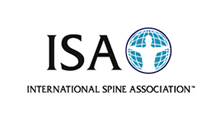
Spine Disorders
|
WHEN TO SEE A SPINE SPECIALIST You should seek the advice of a spine specialist if neck or back pain persists for more than two weeks or if it is progressive in intensity and/or distribution. You should seek immediate healthcare attention if neck or back pain occurs as the result of an injury or if it is associated with serious illness and/or a high fever. Additional signs and symptoms, which warrant prompt medical attention, include:
SCREENING AND DIAGNOSIS CSM can mimic other medical disorders such as multiple sclerosis and normal pressure hydrocephalus (NPH). CSM typically lacks a wax and weaning characteristics of MS and the declining cognitive function of NPH. In the older patient, spinal degeneration secondary to B12 deficiency may also mimic a CSM; it can also coexist with CSM. Most cases of CSM with clinical signs of spinal cord compromise require timely surgical correction/decompression. Advanced diagnostic imaging is typically required to confirm the presence of high-grade cervical or spinal stenosis and the cause for spinal cord signs and symptoms. An MRI scan and/or a CT scan with a contrast study (myelogram) may demonstrate a narrow spinal canal and associated spinal cord compression. This condition may occur at one or more levels of the spine. Cervical stenosis with spinal cord compromise (myelopathy) may be associated with some degree of biomechanical instability. Positional neck X-rays with flexion/extension views can be useful in ruling out rule out spinal segment abnormal motion and instability. Specialized electrodiagnostic studies referred to as Somatosensory Evoked Potentials (SSEP), studies may be used to help assess the integrity of nerve signal transmission across the spinal cord. The SEP evaluation is an electrical study performed by stimulating the arms/legs with recording of the response at the level of the brain. A delay in the length of time that it takes nerve signals to reach various levels of the spine and the brain can provide valuable insight as to whether there is spinal cord compromise. The differential diagnosis of CSM includes any condition that may result in cervical myelopathy, especially those conditions such as masses or tumors (including as metastatic tumors) that press on the spinal cord. Conditions that mimic spondylotic myelopathy are:
NATURAL HISTORY AND PROGNOSIS Myelopathy is usually a progressive condition that develops slowly, sometimes insidiously in the early stages. The symptoms associated with myelopathy may not progress for years until obvious clinical signs and symptoms emerge. The early presentation may involve difficulty with extremity coordination. Unfortunately, the signs and symptoms of cervical myelopathy rarely improve without surgery to decompress the affected area. Surgical decompression may or may not contribute to improvement of the clinical presentation. The primary goal of surgical intervention is to arrest or slow the progressive nature of the condition and to stabilize the patient’s neurological status. Surgical decompression of the cervical spinal cord can be performed through an anterior (front) approach or posterior (back) approach. Sometimes multiple cervical levels need to be surgically decompressed. |
















